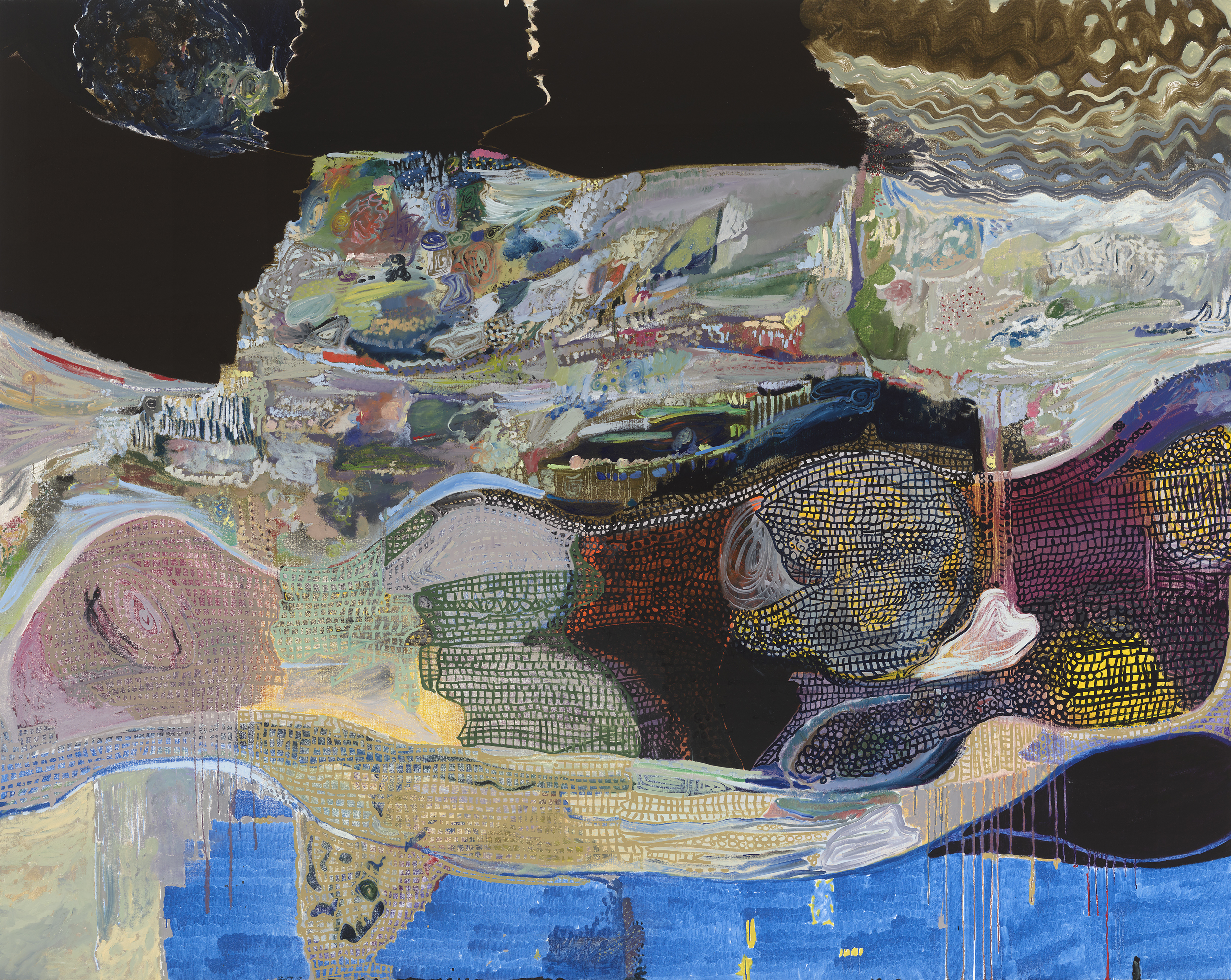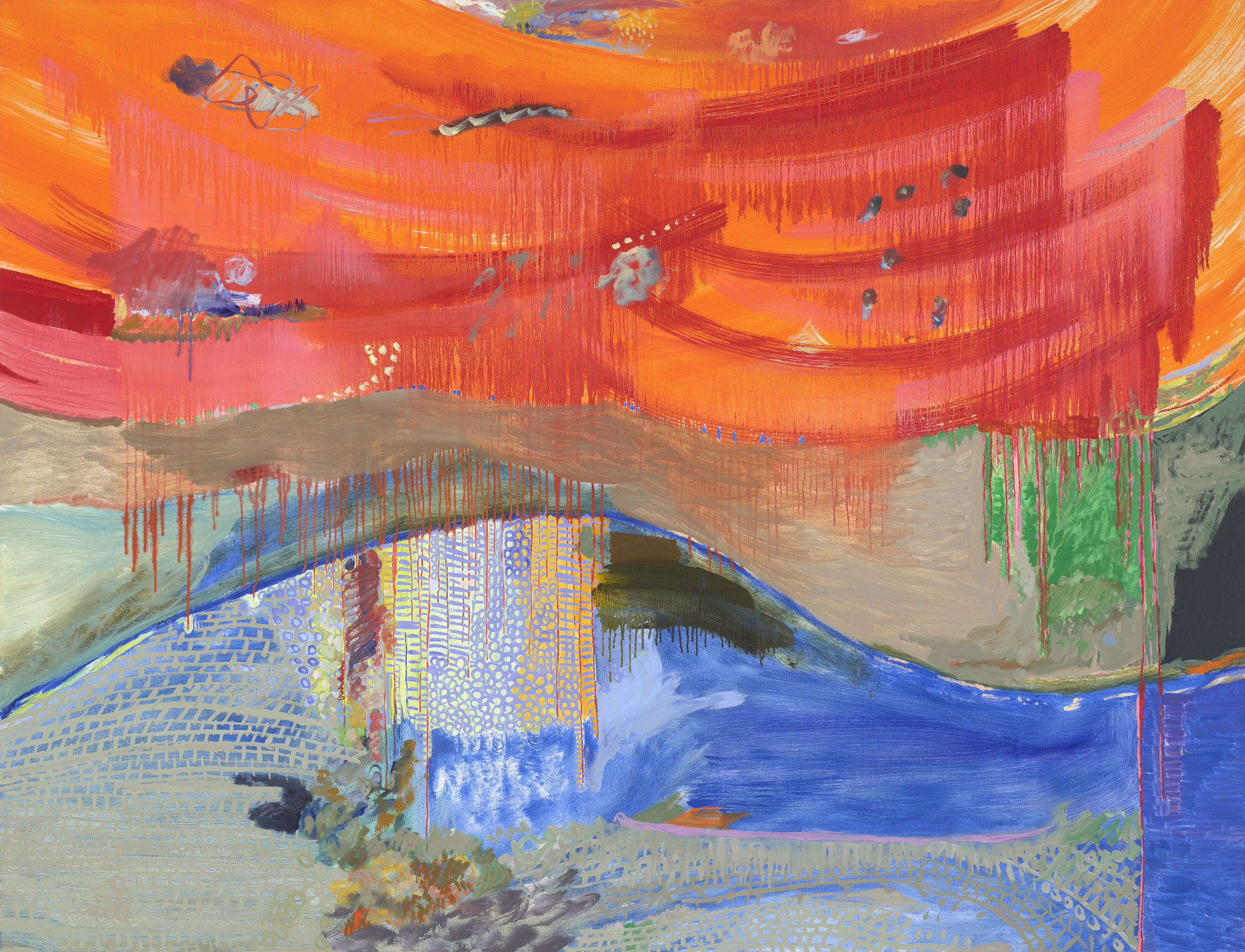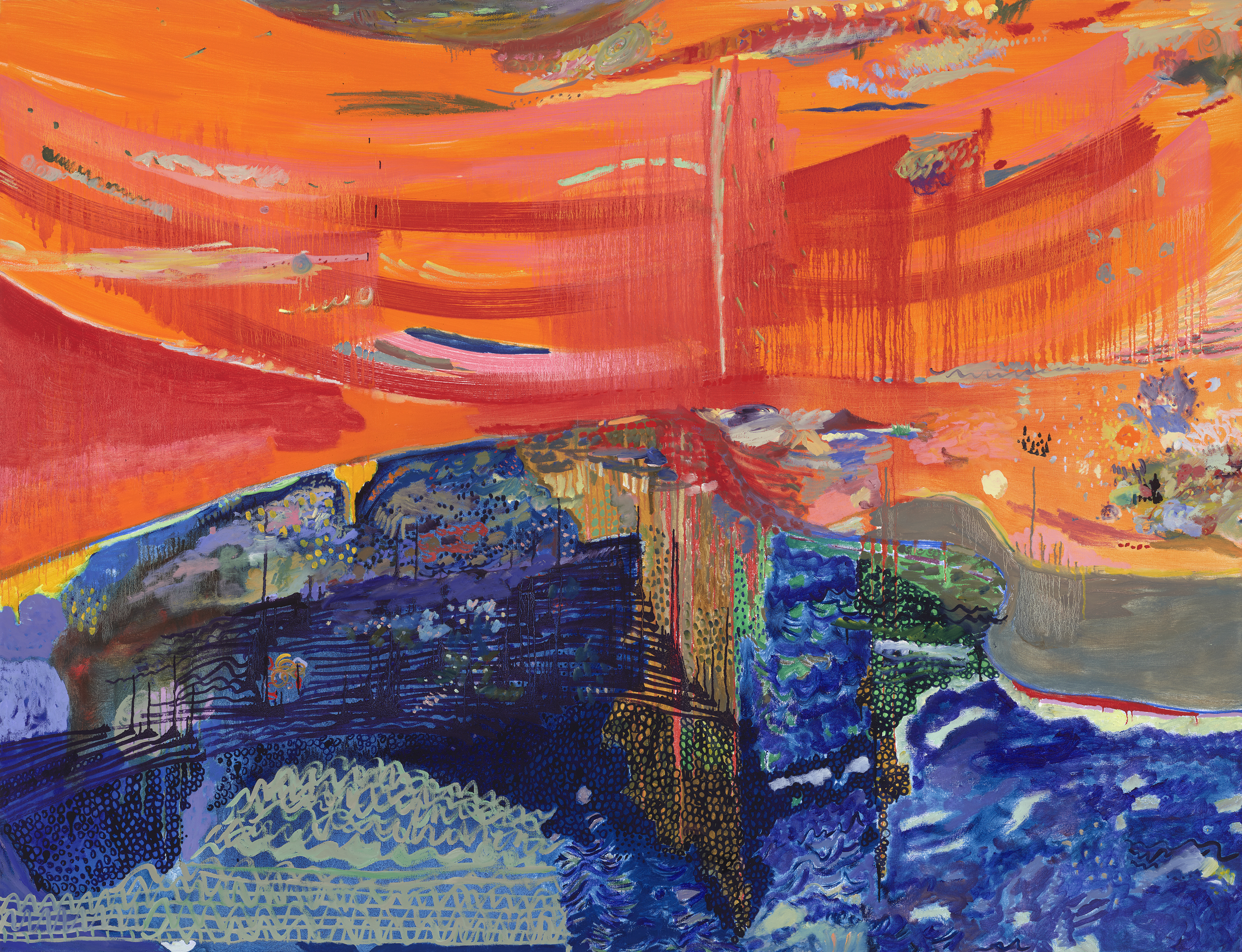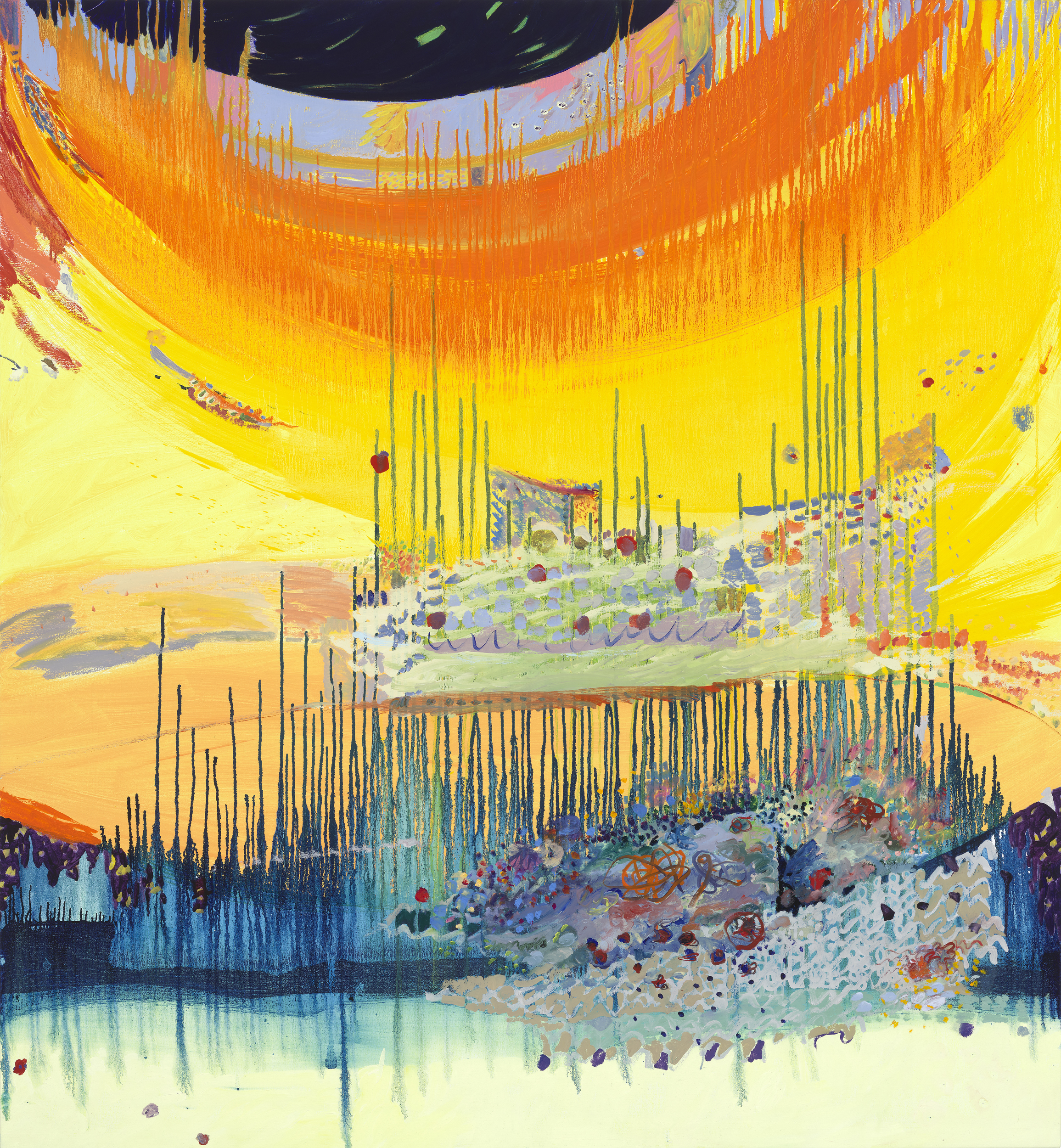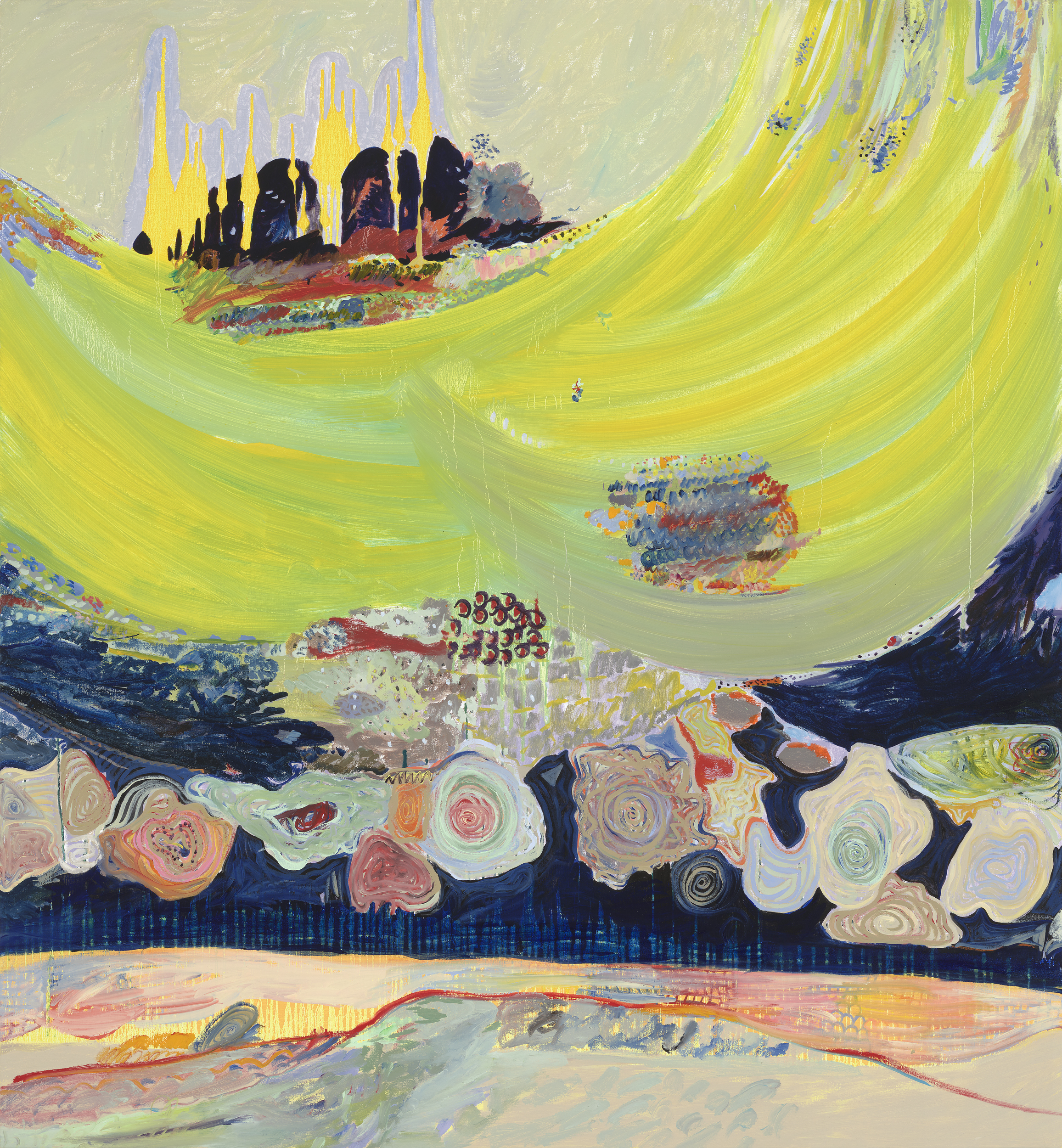Eva Lundsager
Time is Very Quick
Talley Dunn Gallery
September 27 – December 20, 2025
Eva Lundsager, Time is Very Quick, 2025, Installation View, Talley Dunn Gallery
Talley Dunn Gallery is honored to announce the opening of Time is Very Quick, a solo exhibition of lush paintings by esteemed artist Eva Lundsager. Time is Very Quick marks Lundsager’s first presentation of large-scale paintings on canvas at the gallery. Grounded in sensation rather than representation, Time is Very Quick makes space for viewers to connect with their own inner worlds by delving into the infinite cosmoses of Lundsager’s paintings.
Often beginning with a single horizontal line, Lundsager’s paintings are developed intuitively, though it’s an intuition built on decades of looking, living, and painting. The artist’s first mark determines the next. Accumulations occur, get erased, then reformed as her compositions bloom through her acute attention to and relationship with the material. Large swaths of color buttress against areas of delicate line work, melting into organic forms, evoking rolling hills, still waters and atmosphere, or even plant life. The combination of transcendental images with Lundsager’s expressive mark-making speaks to the complexity of the human experience. In the painting If it (2024), broad and bright brush strokes sweep across the top of the canvas, revealing slivers of another world just beyond the drips. Below the heat of the orange and yellow sweeps of color are two speckled masses that seem to have split apart, one floating in the atmosphere above its counterpart, reminiscent of a parent and child, evolving organisms, or even body and spirit. Eva Lundsager’s paintings are full of possibilities. The artist’s use of movement, form and rhythm in If it (2024) creates space on the painted surface and within the viewer to reflect, contemplate and dream.
While Lundsager’s layered compositions often feel otherworldly, the presence of the artist’s hand in the work, developed through thirty-five years of painting, is unmistakable and deeply personal. Through rich color, energetic line, and impassioned form, the artist honors the complexity of life in all its forms. In the series Here we witness (2024), a single blue line is stretched across four canvases. Evolving between each image and leaving traces of itself behind along the way, the blue line becomes more complicated as it makes its journey. Spans of red and orange hover above the blue line throughout the series, until finally the two become one in the final canvas. The mesmerizing blue line, much like a horizon line, denotes the distinction between two beings or worlds, and its surrender to the red expanse above relates to the transformations and changes that we might experience in our own lives. The continuous line in Here we witness gently carries the viewer through time and space, speaking to the exhibition’s title Time is Very Quick, which is an adage Lundsager’s mother-in-law would often say.
Eva Lundsager makes abstract paintings about landscape—or possibly landscape paintings about abstraction—engaging both the state of the environment and the possibilities of painting. As Joseph R. Wolin wrote in 2008, her work is “naturalistic and hallucinatory, bucolic and dystopian.” Her paintings and exquisite watercolors are complex, keenly intelligent, and brashly beautiful. They “sing beautifully of landscape without ever describing one.”
Growing up in semi-rural Maryland in the 1960s and ‘70s, Lundsager freely roamed the farms, woods, and caves along the Patuxent River. She studied art at the University of Maryland and went on to receive an MFA from Hunter College in New York. Her paintings have been written about in many publications including Bomb, Art in America, Time Out New York, Artforum, and The New York Times. She is the recipient of a Guggenheim Fellowship in Painting, and has work in the collections of the St. Louis Art Museum, the Dallas Museum of Art, and the Nerman Museum of Contemporary Art, among others. In 2009, Martha Schwendener wrote: “After the pigment drips down the surface of her canvases, she flips them upside down and continues to paint, so that the downward drips now defy gravity and end up looking like waving sea plants, flames or stalagmites. Morris Louis-like streaks slide sideways across the canvas; abstraction merges with landscape. Lundsager quotes oddball visionary painters like Marsden Hartley, mid-century watercolorist Charles Burchfield, and symbolist Odilon Redon. The results of this motley mix are a fabulous affront to high modernist ideas of painterly ‘purity.’”

